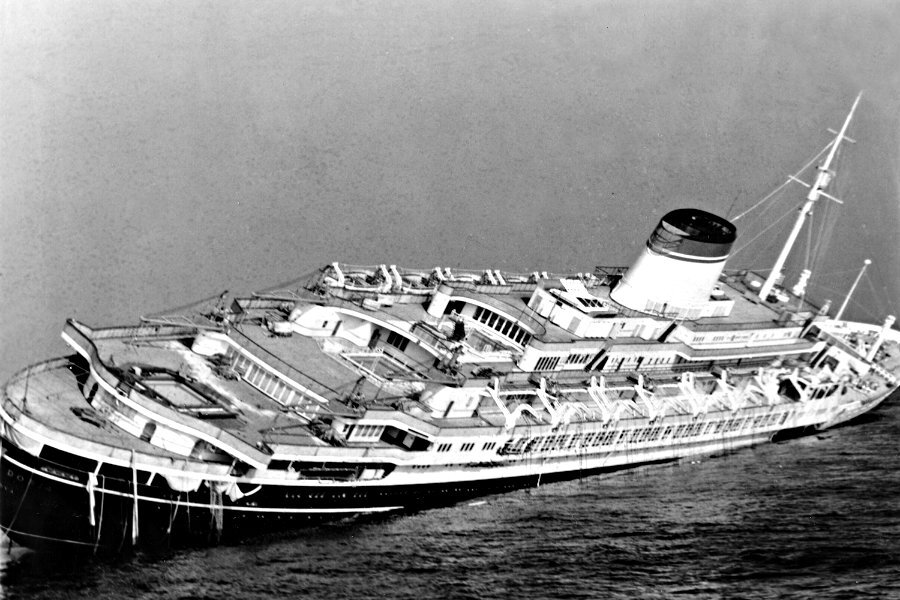New images reveal Andrea Doria shipwreck deteriorating quickly
Loading...
Since the Andrea Doria sank off the coast of Nantucket in 1956, generations of divers have made the dangerous dive to the wreck, leading to the Andrea Doria’s moniker, the “Mount Everest of shipwrecks.” New underwater sonar imaging of the wreck, however, shows that it has deteriorated far more than previously imagined.
The underwater images were taken by an exploration company called OceanGate, which mans an underwater vehicle that allowed them to take detailed images of the abandoned hull.
"It looks so dramatically different," Stockton Rush, the CEO of OceanGate, told the Associated Press. "When you look at the shape of the hull, it appears a lot has come off."
The Andrea Doria had been sailing for just three years when she met her end at 11 PM on a foggy night off the coast of Nantucket on June 25, 1956.
Carrying nearly 1,700 people, including passengers and crew, the Andrea Doria was on the last leg of a transatlantic journey that originated in Genoa, Italy. She was approximately 40 miles off the coast of Nantucket, Massachusetts, when she collided with another passenger liner, the Stockholm, in a fog bank.
Forty-six of her passengers and crew were killed, including several families of Italian immigrants to the United States. Improvements since the sinking of the Titanic several decades before, particularly the quick responses of nearby ships, meant that the loss of life as a result of the crash was relatively small.
The total casualty count on both the Stockholm and the Andrea Doria was just 51. Although crippled by the collision, the Stockholm was able to limp back to New York, with both its own passengers and many of the Andrea Doria’s.
Hours after rescue operations concluded, the Andrea Doria sank beneath the waves nearly 12 hours after the initial collision, at 10 AM on June 26, 1956.
Since that time, dozens of divers have attempted the 240-foot dive to the wreck. Although many expeditions have been successful, swift currents, poor weather, and the freezing New England waters have led 16 divers to their deaths instead.
For this reason, underwater imaging company OceanGate sent its Cyclops 1 submersible to the wreck in order to capture updated images of the sunken ship – and what it found was shocking.
“This iconic shipwreck has been explored by scuba divers and mixed-gas divers for decades – with the first dive occurring within hours of the sinking,” writes OceanGate on its website. “These dives have resulted in limited views of the wreck due to the short bottom time available to divers and limited visibility.”
Rush told the Associated Press that the images captured by the Cyclops indicate that the ship’s bow has broken off, sometime in the last several years. Much of the ship is now unrecognizable due to decay.
“When [the Andrea Doria] first went down, it was pristine and you went straight into the hull and through the windows,” Mr. Rush told the Boston Globe. “Now, it is harder to get inside and far more dangerous. Imagine it as a collapsing cave. Once the cave loses its basic structure, it deteriorates very quickly.”
Rush told the Boston Globe that learning more about the Andrea Doria’s rapid decay could help future divers explore other wrecks as well.
Although OceanGate intended to spend a week at the wreck collecting images, it was forced to call the expedition off after just two days due to weather. Rush told the Associated Press that it hopes to return again next year.







